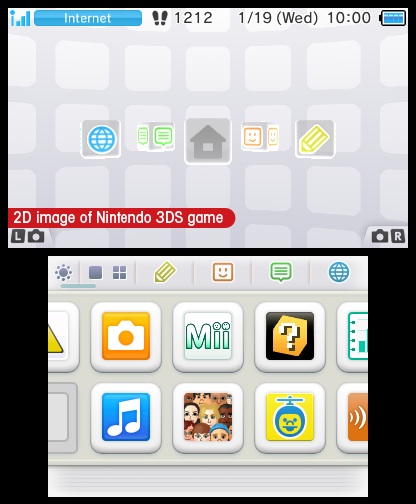
It may be something of a cliché to say by now, but seeing really is believing regarding Nintendo 3DS. The handheld is an ingenious piece of hardware, and its touted auto-stereoscopic display works so naturally, you will be in disbelief the first time you lay eyes upon it.
Rather than assault you with mere visual gimmicks (like objects flying toward the screen), the 3D effect is by and large employed to create a sense of depth and immersion in each of the titles featured at the NYC media event. The effect is nothing short of awe-inspiring– it almost feels as though the screen were a window through which you could peer into the world of whatever game you were playing, and there really is a palpable sense of spatial depth because of it. This effect, I feel, was most pronounced in the Ocarina of Time demo: wandering through the Kokiri Forest in stereoscopic 3D felt as though I were looking into a detailed diorama, and the sense of immersion while playing the game was much greater as a result. It cannot be overstated: the 3D works, and you will be amazed when you witness it in person.

I was initially apprehensive of the circle pad (after having heard of its potential shortcomings), but my hands-on time with the system allayed any of my worries. It may admittedly be a matter of personal preference (and truthfully nothing on display save perhaps Kid Icarus: Uprising required the level of precision needed to control a title like Star Fox 64), but I found the circle pad to be very intuitive and more than a suitable substitute for a true analogue stick. In fact, it very much felt like one despite being an entirely new input device, and I was immediately comfortable using it.

The system itself is actually quite compact, only slightly larger and heavier than a standard Nintendo DSi. As has been noted countless times before, the outer surface of the top screen consists of a glossy finish that is admittedly prone to fingerprints. Fortunately, however, it is not as excessive as one might fear— I ran some pretty intensive finger print tests (worrying about such a problem myself) and found that they do not show up as easily as I originally imagined. That said, I would still avoid handling the system carelessly if you would like to prevent smudges and other blemishes from accumulating on the outer screen.
The home menu is very similar to DSi’s, albeit more colorful and less minimalistic in its design. The various application icons are initially displayed in a horizontal line (just like on DSi), but tapping a button in the upper left corner of the touch screen will alter the size of the icons and compress them all into a single screen. The Start and Select buttons have been moved to the bottom exterior border of the touch screen, with the Home button sandwiched between them. In all, the menu is aesthetically pleasing and very reminiscent of the one featured in DSi, improved just enough to give it a sheen of newness.

Though my time exploring the ins and outs of the system was brief, it has boosted my anticipation for its release immensely. Having never before gotten the chance to witness 3DS in person, I questioned whether or not it could possibly live up to the astronomical height that surrounded it. Needless to say, it completely has, and I eagerly await the opportunity to purchase one of my own.




 ShareThis
ShareThis





